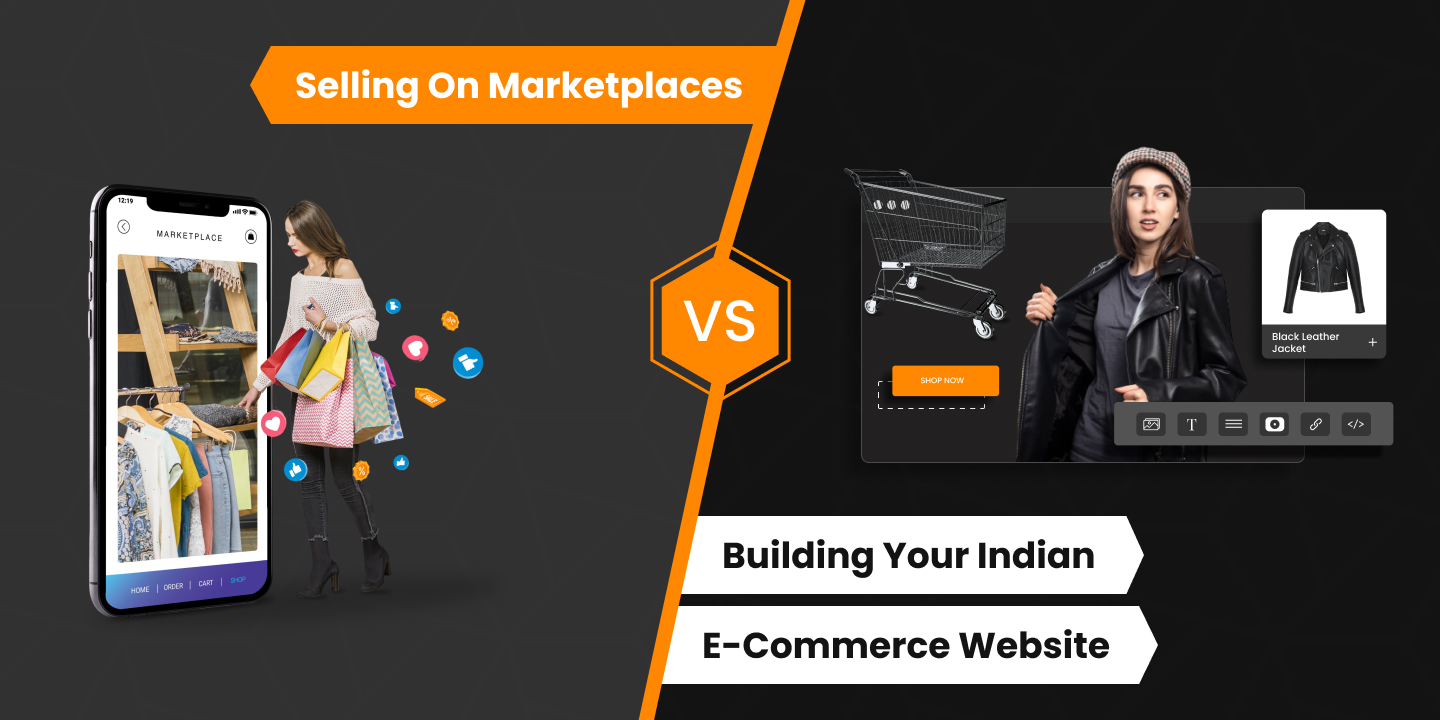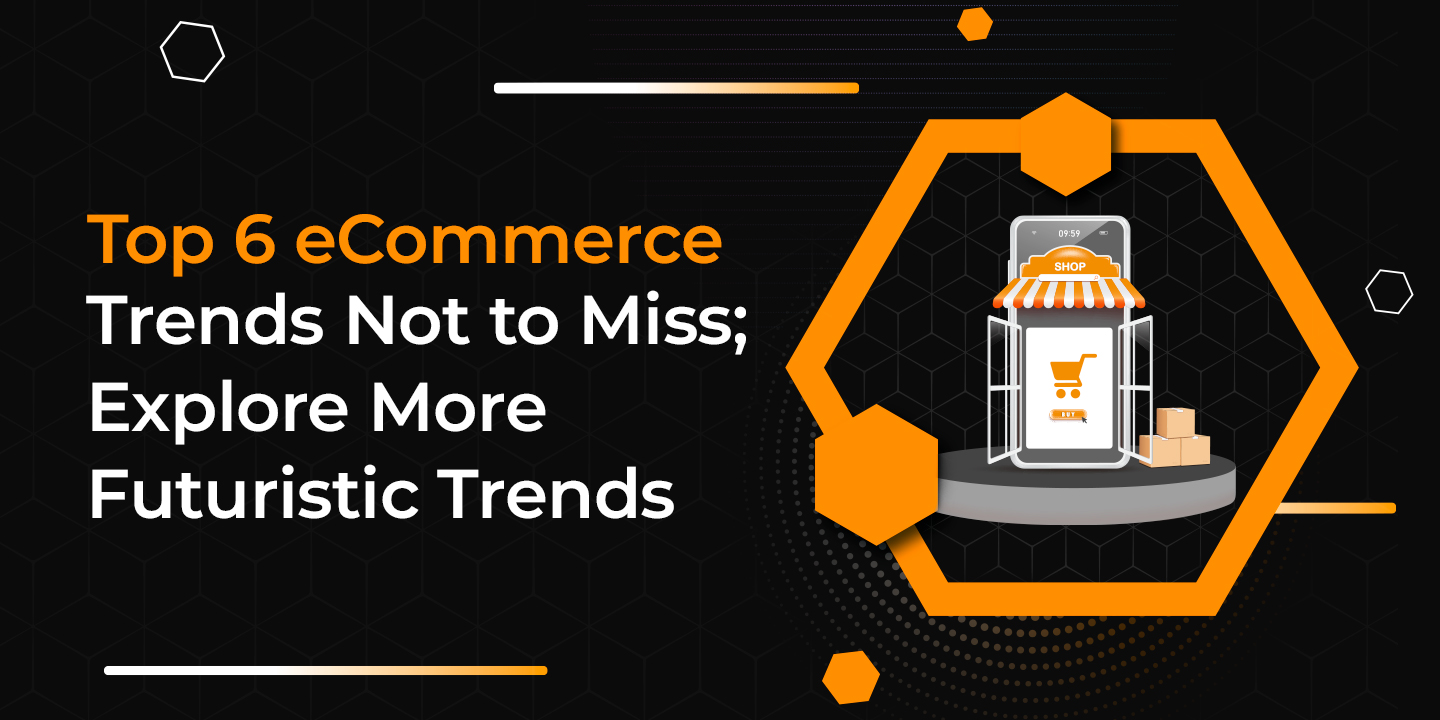E-commerce is one of the most important and rapidly expanding industries compared to other business sectors, even though the business world is increasing due to numerous technical advancements and variations. E-commerce is becoming increasingly popular, as it did in the COVID era.
E-commerce websites have been pleasing clients for a few years for various reasons, including accessibility, convenience, and a large selection of products. It has caused a lot of entrepreneurs to focus on the e-commerce sector. It has become difficult to provide complete customer satisfaction and stay ahead of the competition due to the intense competition.
Finding and using the newest methods and technologies—like AR, VR, UI/UX, etc.—would be a great way for an eCommerce web development company Mumbai to advance your company’s reputation and accomplish your objectives. Here are some pointers on E-commerce design and development if you’re looking for strategies to help you achieve your business objectives.
What Is Ecommerce Web Development?
Designing an ecommerce website involves developing its technical aspects, encompassing functionality, payment processing, user-responsive behavior, and aesthetics. Web development contributes to creating web applications, ensuring a positive user experience. 9ecommerce specializes in the ongoing development, redesign, and support of customer-facing and enterprise web applications within a fiercely competitive market.
Steps to Develop eCommerce Website Developers Mumbai
How can you create websites within your constraints of time and money?
These specifications, which include constant availability, quick speeds, exceptional customer support, and operational flexibility, must be met while building an eCommerce website.
Select a first-rate hosting provider that offers this essential feature as well. You will finally have profitable internet sales by drawing visitors.
- Discover the Optimal Ecommerce Platform
- Secure a Domain Name
- Identify a Top Website Development Company
- Select Your Templates
- Select Your Templates
- Craft Product Pages
- Set Up Payment Methods
- Customize Your Shipping Preferences
Tips to Design eCommerce website in Mumbai
1. Prioritize UX over everything else.
If your website doesn’t offer a perfect User Experience (UX), then even the best products won’t be able to impress your customers. Consider how long it takes for your website to load. Fast loading times are one of the major factors influencing user experience (UX), and according to 52% of online buyers, they directly impact how loyal they are to a website.
You will lose out on business if your website loads very slowly. Create a simple, intuitive homepage for a fantastic user experience. Use high-quality photos, a minimalist style, contrasting colors for call-to-action buttons, enough white space, a visual hierarchy of elements, and sidebars to add distinct product categories. For reliable UX enhancement, consider the expertise of an eCommerce website service in Mumbai.
2. SEO Practices
Whichever techniques you suggest, one of the key elements that will raise your Google visibility is SEO. A website’s search engine optimization should be a priority when creating an e-commerce platform. Using built-in SEO tools would help you reach the ideal clients using different SEO elements like product descriptions and keywords.
Your ecommerce website’s product listing needs to be optimized for search engines. Gaining organic traffic and awareness can also be facilitated by setting up blog sections and including worthwhile content about your goods and services. Consider the expertise of eCommerce website developers in Mumbai for effective implementation of SEO strategies.
3. Build a cross-browser-compatible website.
There are numerous browser options available in today’s digitally-driven society. Your website must offer a consistent user experience and work with various browsers.
A website development company may guarantee cross-browser compatibility in several ways, including leveraging frameworks, verifying HTML and CSS, and writing simple, consistent code. Cross-browser compatibility testing should be performed to find the problems that must be fixed.
4. Create a Clear CTA
Use color to direct visitors to the sites and paths most crucial to your online store. Consider the contrast: a light CTA button won’t be noticeable on a light page.
Give a button or a call to action a neutral color to indicate that it is comparatively insignificant. If a button is meant to lead to a conversion, choose a color that will make it stand out and be visually appealing.
There’s probably a style guide or brand guidelines for your organization. Therefore, attempt to use the most striking colors from your company’s style guide when choosing a color scheme for your e-commerce website design.
If there aren’t any striking colors in your style guide, try enlarging or modifying it to increase online conversion rates.
5. Use High-Quality Products Images
As previously stated, images capture the user’s attention and are more visually appealing than text. Therefore, making a website that is easy to use and has visually appealing content is essential. Your photos highlight high-resolution merchandise in a targeted and concentrated manner.
Users will gain more knowledge about the products by seeing more photographs and videos that show them from different perspectives. In addition to the features and descriptions of the products, it might captivate the users. You can provide consumer product reviews in addition to these elements to increase your customers’ trust in you.
6. Simple Cart Shopping Design
We don’t need statistics to prove that web consumers value straightforward and practical shopping carts. It’s obvious. While a simple shopping cart reduces steps, there are ways to improve its usefulness. The following user categories should be implemented: registered, unregistered, and guest preferences.
Once a user hits the shopping basket, the first screen may ask them to log in, write, or continue as a guest. Users should be effortlessly routed to their complete baskets once they have registered or logged in to minimize any discouragement from having to search for things again.
An even more efficient method would be a one-step checkout, in which all required processes are consolidated into a single dynamic window that updates itself as customers enter data. Consider the expertise of an eCommerce website service in Mumbai. for optimizing your shopping cart and checkout process.
7. Marketing Strategy
An effective marketing plan created with your website will help you go ahead on the first orders, regardless of whether you are starting a new retail venture or creating a website based on an existing store. But it also establishes the features contributing to a well-designed website and defines its structure.
Establishing a marketing plan in advance will assist you in determining the features you’ll require. For instance, you could include push notifications and social network sharing options for desktop and mobile browsers. Doing something throughout the website development process is more efficient than after the launch.
Conclusion
Developing an e-commerce website proves to be a strategic approach for engaging with the discerning contemporary consumer base. Collaborating with eCommerce website service in Mumbai. proficient in crafting and seamlessly integrating conversion-centric user interfaces is paramount.
The landscape of online shopping has significantly altered the dynamics of consumer transactions and the strategies employed by businesses to market their products and services.
Our web design company boasts a dedicated team and comprehensive services ready to support you in undertaking extensive ecommerce website development projects tailored for large corporations.
Leveraging a diverse range of features, we specialize in constructing personalized e-commerce websites that offer a high level of adaptability, pushing our clients beyond the conventional boundaries of online commerce.



